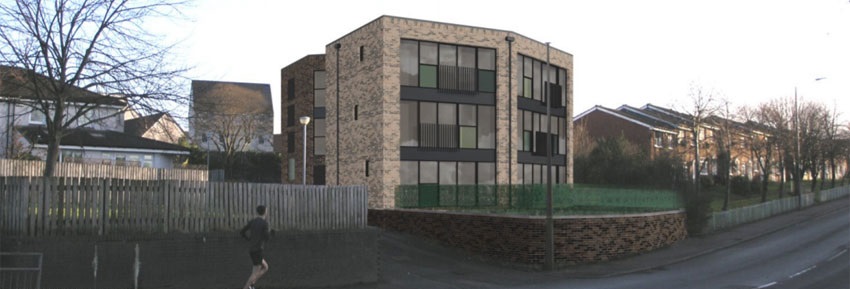Green light for flats to replace Glasgow pub
Glasgow planners have approved plans to demolish an Anniesland pub and build flats in its place.
About this development:
- Authority:Glasgow City
- Type:Residential
- Applications:
- Team:Detail Architecture (architect)

Detail Architecture's plans for the flats
A three-storey block containing six flats is proposed for the site of the Signal Bar at 176 Fulton Street.
The development will comprise of five two-bedroom flats and one with one bedroom. Car and bike parking will also be provided plus private recreational green space for the use of the residents, ReGlasgow reports.
A report by Glasgow City Council officials stated: “It is considered that the proposed flatted residential building is of good sustainable design and complies with the relevant policies of the City Development Plan in that the proposal does not result in any significant loss of residential amenity; affect the character of the surrounding area or impact upon road and pedestrian safety.
“The proposal can be comfortably accommodated within this site and there would be no negative amenity issues in terms of loss of sunlight or privacy on neighbouring dwellings.
“The proposed scale, design and use of materials are sympathetic to the existing built development in the surrounding area, and as a result the proposal would contribute positively to its setting and the wider streetscape.
“The proposal would lead to a marked improvement from the appearance of the [existing] building and its associated areas of hardstanding which are located on the site at present.”
A design statement submitted by Detail Architecture, explains: “The pub name commemorates the fact that a railway signal box once stood on this site. Although the pub was re-named as ‘The Second Step’ in the 1990s, its original incarnation was as a ‘themed railway bar’ called ‘The Signal Box’ when it was built in 1971 by the Tennent Caledonian Breweries.
“Although the 1970s design was certainly unusual, bold, and arguably striking for its time, the proportions were inconsistent/compromised and the execution poor, in light of which it would perhaps be fair today to say (and widely accepted), that the building is of little or no architectural merit.”
The document continues: “We feel an opportunity exists to create a landmark building on this site, of genuine merit in contemporary architectural terms, which it would be a great pity to pass up through adopting a more timid and traditional approach.”























